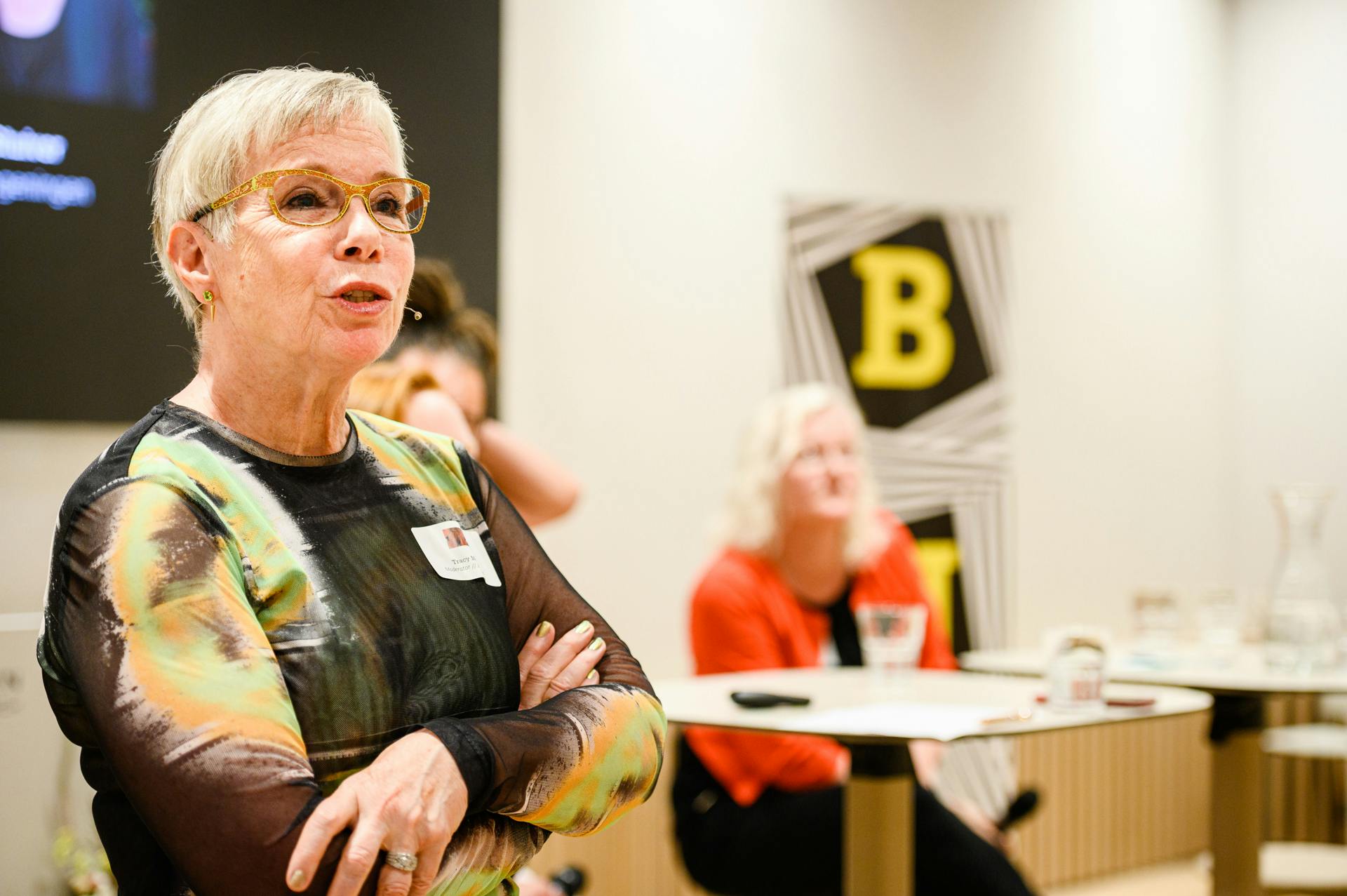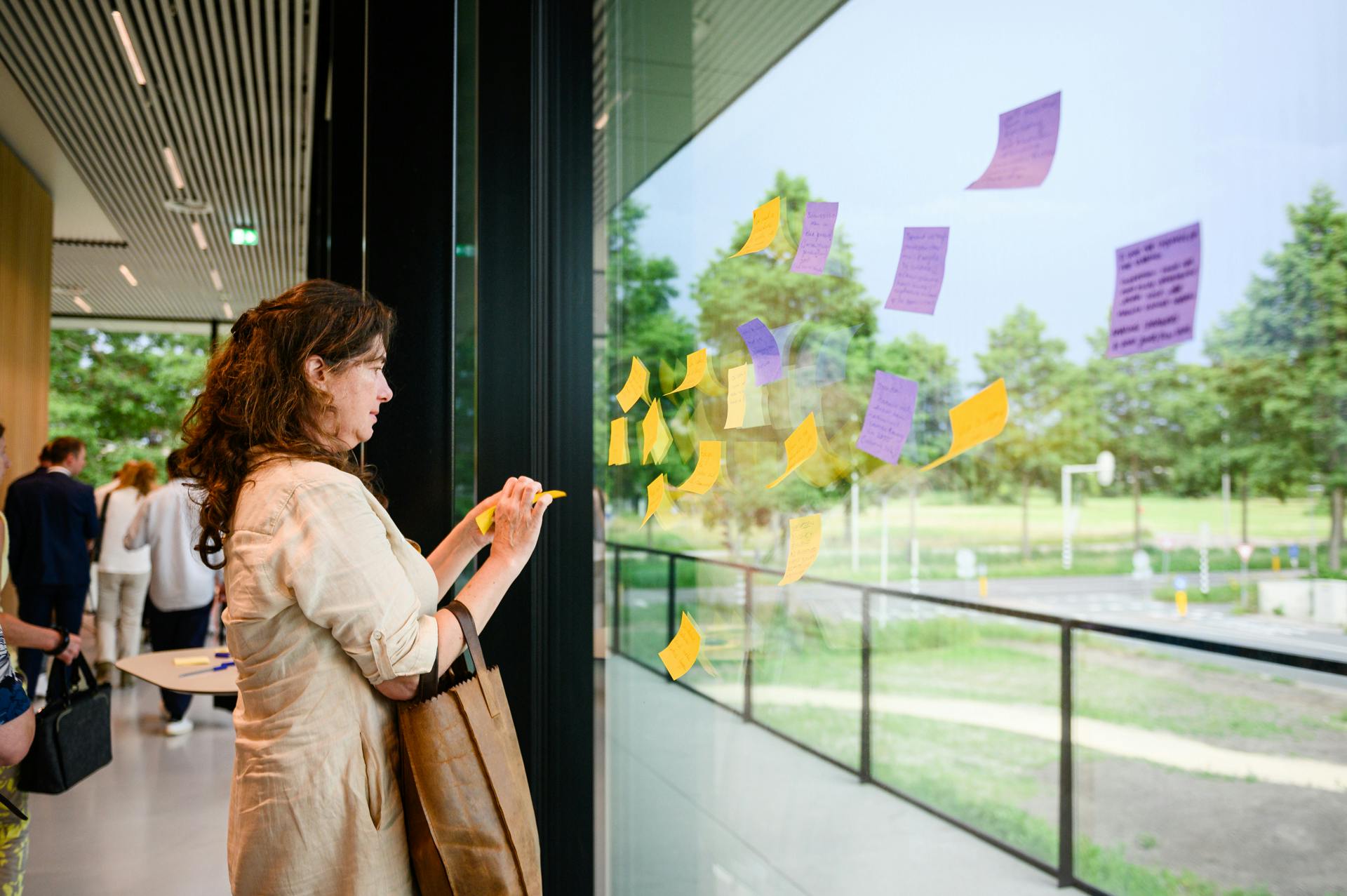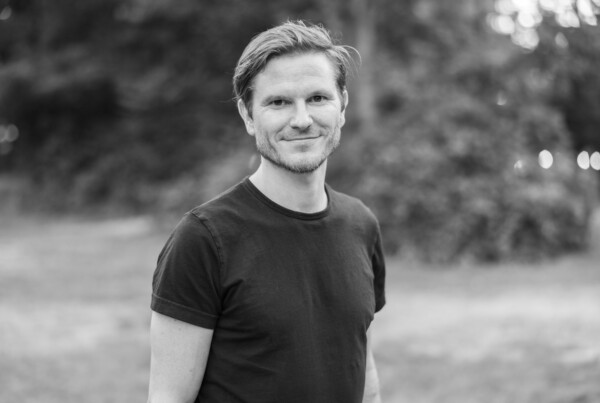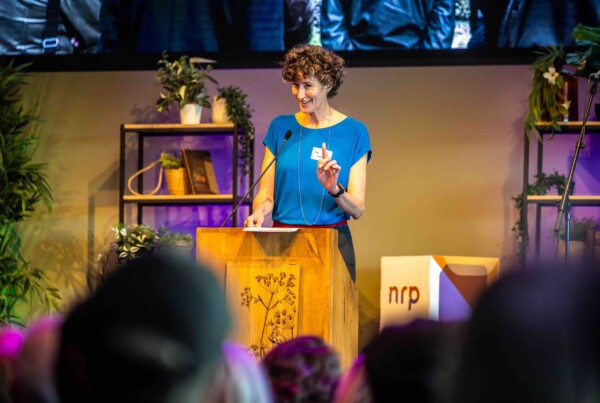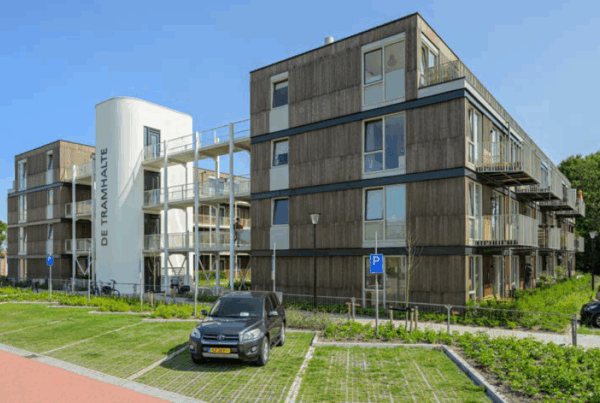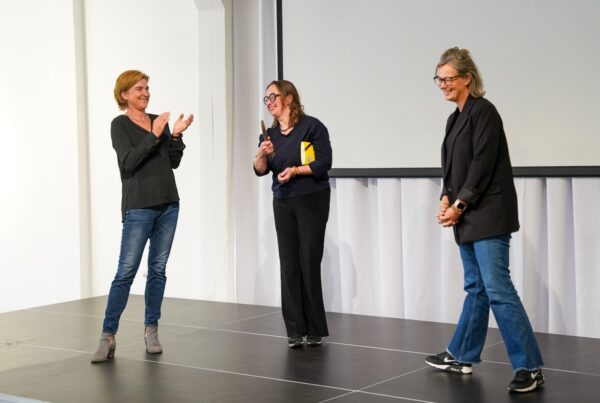In the modern auditorium of the new Omnia building, that recently opened at the Wageningen University (WUR), we kicked off the night with our moderator Tracy Metz. She introduced different subjects within the topic; nature inclusive building, regenerative design, biodiversity, co-existence health and livability, inviting all guests to be inspired and join the interactive evening.
Our first keynote speaker Sarah Ichioka of Desirelines spoke about ‘creating a regenerative future through inspiration from our past’. Can we look at our past in restoring our relationship with nature? Architecture has been fixated on the concept of sustainability. It is a lot about carbon offset and technical stuff, essentially allowing business to continue as usual. Here we are looking into changing sustainability into regenerative design. Regenerative design is not focused to lessen the harm of building projects, but to put design to work as positive forces that repair natural systems.
The second speaker Dr. Nadina Galle speaks about the Internet of Nature, yes, you read it right. She wants to link the only thing in our lives that is not connected to the internet; nature, combining ecology with technology. Nearly everything in our lives has undergone a digital transformation. Except for nature; our relationship with nature has remained offline. What are the emerging and important technologies to regenerate our natural world? Nadina discusses several projects in which nature has been connected to technology, such as sensors that show a tree’s needs, making trees speak through a GPS audio tour and her own app called Naturedose. It’s an app that tracks your time in nature. Currently there are clinical trials being ran to see if there are correlations with mental health. According to her, investment in nature is investment in a happy and healthy economy. “I want nature to be so natural that it’s a part of our days”.
After a networking dinner and a tour through the new building by architect Steven Schulze, Broekbakema, it was time for a more practical view on nature inclusive design. With no-one other than Ad Kil, from RO&AD architecten . He showed the audience how one can implement nature inclusive design in clever ways through two projects. The beautiful birdwatch house Tij had the purpose to attract not only birdwatchers, but other people too, as well as being design in such a way that nature could continue its path or even improve. The second project, Veldstation, remains in progress due to the current mating season. It shows how humans can work together to accommodate nature. This project is a perfect example: when building in nature with nature, other obstacles such as flooding and the seasons can arise. Veldstation is to be a bird ring station where not only birds can build nests, but insects and plants have a space too. The materials used in the project consists mostly of re-used wood, to make it sustainable too.
Lastly, our panel discussion took place on stage with Marian Stuiver (researcher at WUR), Femke Peters (landscape architect at Karres en Brands) and Gijs Meijer (ecologist at Sweco). The common point of view is that nature inclusive design is to be taken seriously. To not only have ecologists look at restoring nature where the project is ‘destroying’ it. But to work with nature and include it in the designs. Biodiversity should not only be on a checklist for a new project, it should be about more than that. It should be about making nature happen, and creating a natural atmosphere for our ecosystems. Adding nature in your design will not be the easiest route, but it will help to restore the balance between the built environment and nature. Involve different parties such as ecologists, people with knowledge on the subject. Unfortunately, there are lots of policies that are not yet up to speed with the newest trends, but don’t let that stop you in giving nature a place in our environment.
As nature inclusive design is gaining more recognition, it can feel like it’s a “must” to keep up with competitors. This can also be the case for clients, who can sometimes be prone to greenwashing by “simply adding an insect hotel, or a green roof or façade.” According to our experts, this is not enough. Nature inclusive design can be so much more than that, so much more beautiful and inclusive! Unfortunately, architects notice that the option of designing more nature inclusive is often perceived as more expensive or unnecessary.
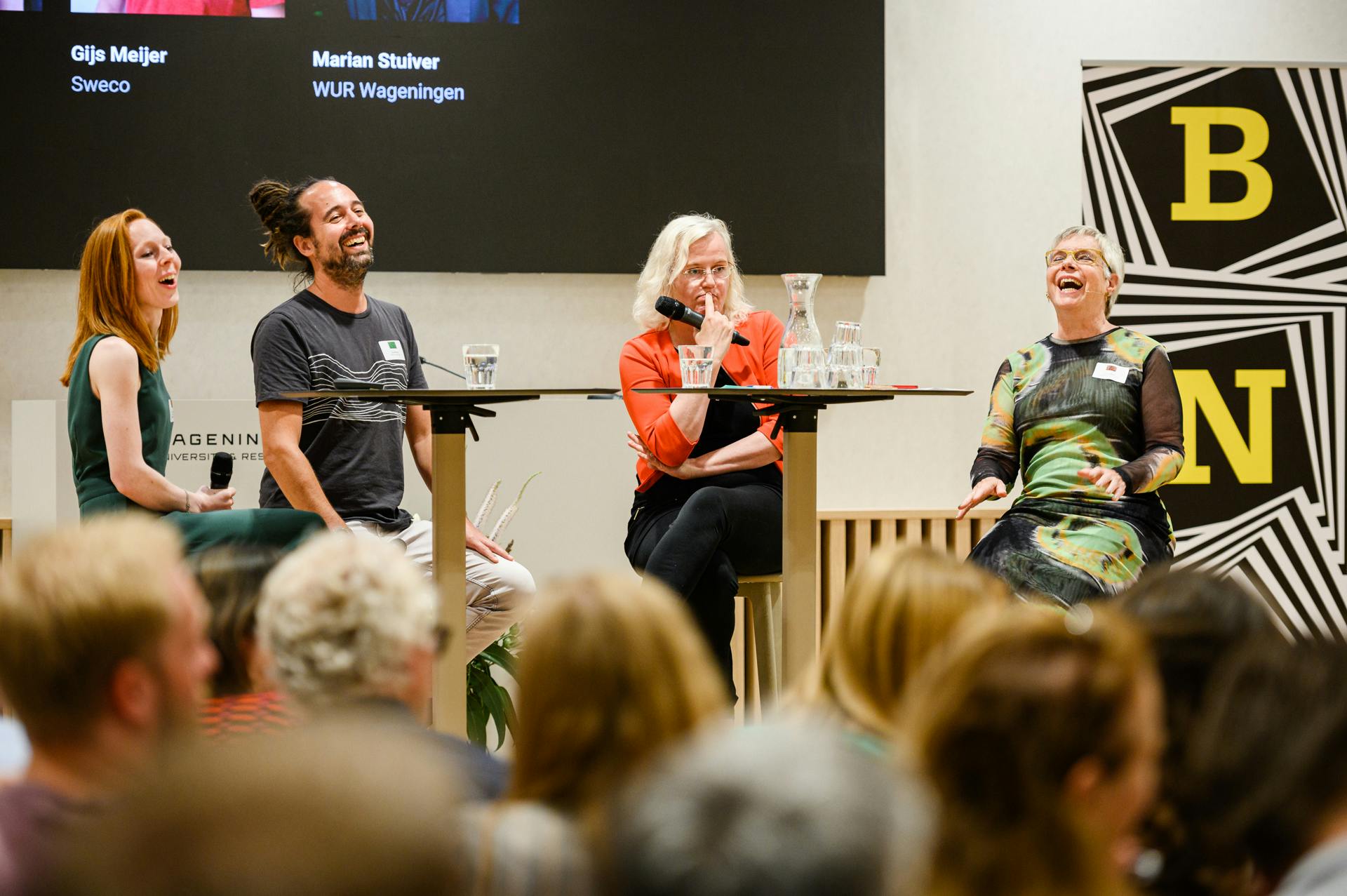
To conclude the discussion there are a lot of unpredictable factors within nature inclusive design and building. There are things to think about such as maintenance. Luckily, there are also a lot of solutions: successful projects, local indigenous communities that thrive in and with nature. Instead of doom-thinking, we should think in solutions and how to get people involved and invested. Not only financially, but emotionally too. Be part of the whole process, not only the design. Landscape architects can be used to monitor realized projects, not only design them. Use the people who have the knowledge for ultimate results.
A night full of inspiration and a new view on how nature can and needs to be more included in designs. Get back in touch with nature, see humans as a part of nature and help restore the balance and secure our natural ecosystems. As Marian quotes: “Nature is a chaos, we live in a square world, by getting more nature we can live more fluid!”
